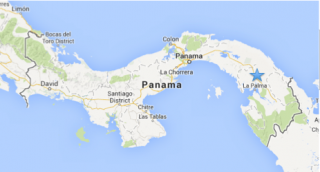Arimae, Panama
![]()
![]()
![]()
![]()
![]()
![]()
![]() Click on Programs to learn more about their work in this community
Click on Programs to learn more about their work in this community
General Information
| Population* | 552 |
| Number of homes | 108 |
| Avg # of people per home | 5 |
| Electricity | None |
| Corregimiento | Santa Fe |
| District | Chepigal |
| Corresponding Health Center | Santa Fe |
| Distance from compounds | N/A |
| Road conditions | Good |
* Population does not reflect how many patients will be seen on medical
brigades as many people from surrounding communities come seeking
Medical Brigades medical attention.
Expressed Needs and Capacities
The community of Arimae is well organized and has many established committees and organizations within the village. They currently have a water committee, a parents’ association, and an association for the women of Arimae. Areas in which the community would like improve include the protection of their culture, environmental protection and reforestation, acquiring land titles, and staffing their health post with a health assistant.
Arimae has one primary school that hosts classes for students grades one through six. There are six teachers. The school has 8 classrooms, a kitchen, a computer center, and a cafeteria. The school is located very near the Pan-American Highway. Children in the community of Arimae must travel to the community of Zapallal in order to attend secondary school.
Arimae has a gravity-run aqueduct water system. This system is divided into 3 sectors and does not run consistently. Via this system, running water is available only 2 days a week in summer time (January and February) and every other day during the remaining months of the year. The water pressure is normal, and the water is chlorinated twice a month. One hundred percent of the population is connected to the system, and each household pays a 3 dollar per month maintenance fee. The water source that supplies this community is located three and a half hours away.
Arimae has an abandoned health post which is located in the center of town. There are currently no licensed medical professionals living in this community.
The most common illnesses amongst the men are skin infections, diabetes, high blood pressure, and headaches. The most common amongst women are vaginal infections, skin infections, and the common cold. For dental access, the community must travel to Santa Fe (approximately 30 minutes on public transport) or Torti (approximately 1 hour on public transport).
None of the community members currently have functioning latrines, but 98% have stoves in their homes, and one percent has cement floors. The community receives medical attention in the form of Medical and Dental brigades every 4-6 months.
The most common forms of livelihood amongst the men in this community are agriculture and artisanal crafts. The women usually take care of the home and also make and sell traditional crafts. The main crops produced in Arimae are corn, plantains, and other fruits. The community members currently do not have access to credit within or outside of the community.
The community has never had any form of waste management education. Community members either burn their trash or dispose of it into nearby rivers. No one in the community practices slash and burn, nor does anyone use chemical or organic products on their farms. During previous reforestation projects, the community mainly planted wood trees.
The main and ongoing legal conflict within this community is that of land titling. The community does not have access to lawyers nor have they received any human rights education.
As an indigenous Embera community, Arimae has their own leader - el Noko. They also have a local president who meets with presidents from other communities to consult and discuss regional affairs. Almost all issues within the community are resolved internally, free from outside assistance. The community members all live on a piece of collective land.
Medical and Dental are currently the only programs working in Arimae.
Source of information: Key informant interview
Date of interview: July, 15th 2011
Last Visited: December 26, 2013
Last Updated: January 26, 2016
